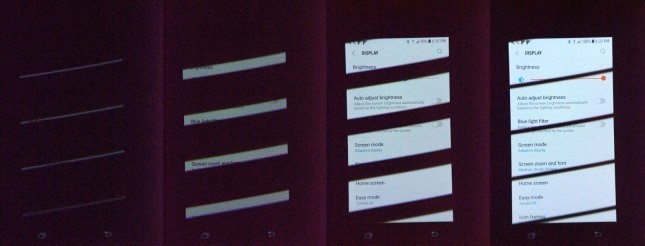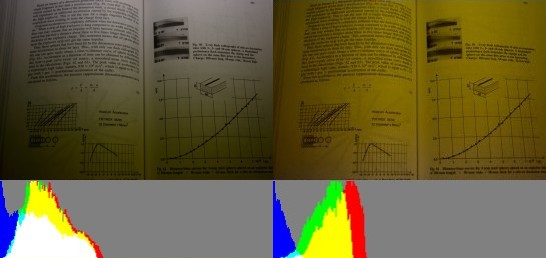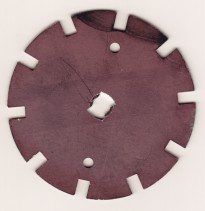 ots of people have commented about how the Internet seems to be destroying reading
comprehension. Article lengths are getting shorter. Content is being dumbed down.
People skim through articles and jump randomly from one source to another. What's
going on? The Internet should have been the world's greatest force for knowledge,
yet it's making people stupid. Why?
ots of people have commented about how the Internet seems to be destroying reading
comprehension. Article lengths are getting shorter. Content is being dumbed down.
People skim through articles and jump randomly from one source to another. What's
going on? The Internet should have been the world's greatest force for knowledge,
yet it's making people stupid. Why?
Maybe, as some have suggested, it's only bringing out people's innate stupidity. A quick look at YouTube, which I had occasion to do last year while trying to learn about chainsaws, will show that it's crawling with idiotic videos showing people being struck by trees and misusing hazardous cutting tools. The videos make the fictional TV show Ow My Balls! in the movie Idiocracy look like Masterpiece Theatre. It's enough to convince any observer that the Internet is becoming the new Boob Tube.

Fig. 1. Cell phone LCD screen photographed by a camera. Exposure: 1/8000, Increasing levels of screen brightness (minimum to maximum). The pictures were taken in a dark room. The horizontal bars are not caused by aliasing with ambient lighting. They are caused by dimming done by circuits that decrease the amount of time the LED backlight is turned on, known as pulse-width modulation. They resemble diagonal bars because multiple on-off cycles are happening during the exposure.*
So there's certainly evidence for the innate stupidity theory, but I suspect the real reason we're becoming functionally illiterate is that those electronic gizmos are painful to read on. The government-mandated change from incandescent bulbs, coupled with the ubiquitous use of LEDs and fluorescents, is having devastating effects on our ability to read.
LEDs
Have you ever tried to read a book at a disco? No, of course not. It would be darn near impossible, because the stroboscopic lighting would drive your eyes crazy. The same is true, to a lesser extent, with fluorescent lights, computer monitors, and LED lighting.
Many people dismiss the idea that LED bulbs and LCD screens flicker. And they have a point. LEDs aren't designed to flicker: they are DC devices, and a perfect power supply, such as a battery, ought to be flicker-free. But there are two reasons why they do flicker.
The first reason is that LEDs cannot really be dimmed. They can only simulate dimming by switching on and off at different rates. Fig. 1 shows how that works. A dimmer screen appears dim because it's on for shorter lengths of time. Thus any screen whose brightness can be adjusted is flickering, whether you notice it or not.
The second reason is the need to convert 50 or 60 Hz AC to DC to run LED light bulbs. Manufacturers are well aware that 120Hz flicker from rectified AC is unacceptable, and LED bulbs typically use oscillators to make them flicker up to 10,000 times a second, supposedly above the ability of our eyes to notice.
Flickering is everywhere
Although we can't visually see flickering at these frequencies, it still affects us. You might not notice it in everyday activities like watching TV or cooking dinner. But reading becomes tiring after only a few hours. I read hundreds of pages of books and scientific journals every week as part of my job. Like everyone else, I also sometimes read stuff on the Internet. But I find it very difficult to read books on a computer monitor or under an LED or fluorescent bulb. It's possible, but it's far less taxing to go outside and read under sunlight.
Since reading a technical book or paper requires concentration, I either read outside, wrapped up in two coats and a blanket, scarf, and hat, or I don't read at all. During hunting season I also have to wear an orange Day-Glo vest, and worst of all I must leave my deer antler hat inside. (Since I live in a rural area, I also have to make sure the book doesn't have a picture of an animal or, indeed, any brown-colored item on the cover.)
No doubt my neighbors think I'm weird for sitting out on the deck reading a book in twenty-degree (−6.6°C) weather, but the joke's on them.
To observe the phenomenon, you don't need a fancy photosensor and digital acquisition system. Just click on a text window with a black background, say a DOS box or a terminal window in Linux, put some text in it, and move it around in a smooth circular motion. If your monitor is reasonably dim, you will not see a blur, but distinct, clearly repeated (though naturally unreadable) copies of the letters. Example: Sample text (opens a new window).
It's also why it's so hard to take pictures under a fluorescent lamp. Fig. 2 below shows two successive photographs taken with exactly the same camera conditions from a random page from one of my favorite books (Tactical Missile Warheads by J. Carleone), taken under a 40-watt fluorescent lamp (again, in an otherwise darkened room). The color is changing 120 times a second from white to yellow and then pink. Even worse, the direction of the light also changes, so one part of the book is sometimes dark.

Fig. 2 Two photos of a book taken under a fluorescent lamp. (Focal length 28 mm, f/4, 1/320s, ISO 100, White balance direct sunlight. Cool white bulbs. The histograms below show how the color changes over time).
To measure flicker, you need a photodiode and a digital acquisition system or oscilloscope. I'm doing that now and I'll update this page in the next few weeks. But a simpler way is to attach a chopper (Fig. 3) to a variable speed motor like a Dremel tool. As you increase the speed, it will slow down the flicker to a rate that's easily detectable. You'll discover that even incandescent bulbs show some flicker.
How flickering affects us

Fig. 3. Chopper for Dremel tool
How can something we can't observe be harmful? It's because of a phenomenon called aliasing. When you read, your eyes sweep back and forth in a motion called a saccade. Your eyes also unconsciously make small movements to prevent the text from appearing in a constant location. If this were not done, the cells in your retina would adapt, and the object would become invisible. All these small eye movements interact with the flickering to cause aliasing, which pushes those frequencies down, only for an instant, into the eye's range of detectability. Flicker is more noticeable in your peripheral vision.
This causes tiredness and even migraines when you read text, because your eye has to adapt constantly to maintain focus. Most people don't get headaches; distaste for reading sets in well before headache occurs. So people stop reading, thinking the article is too long or too uninteresting. Which it may be, but that is not the real reason they stopped.
This article has a good description of the various types of flicker. Or, if you can stand to read a long article on your computer, there's this white paper on flicker. This article gives calculations useful for the lighting industry.
I'm convinced that the subliminal flickering of backlit computer screens is contributing to the often-noted inability of people to concentrate on information on the Internet.
Some day, engineers will devise an affordable way of producing wide-spectrum, efficient, stable white light. Indeed, a paper came out in Nature Nanotechnology about a year ago showing how incandescents can be made as efficient as LED bulbs.
Another solution is to improve rectifiers to remove the AC entirely, or to minimize flicker by increasing the frequency far into the RF. These solutions raise the cost of bulbs and can cause radio interference. (Some high-end fluorescent tube fixtures used in the lab actually use radio frequency excitation to cause fluorescence.**) Until the market demands these solutions, we may have to suffer with the unintended consequences of the incandescent light ban. It is not an insignificant problem: by making it more unpleasant to read, LED bulbs contribute to the dumbing down of America.
* Technically, the bars are caused by the rolling shutter effect in the CMOS image sensor in the camera, which happens because the pixels in a CMOS sensor are read out sequentially from left to right (the cell phone was oriented sideways in this picture). CCD sensors read out the pixels globally, and an image with a CCD camera would be completely dark or completely light if the shutter could be driven fast enough.

VUV bulb
** We have one, a vacuum UV bulb, which consists solely of a sealed quartz tube with a magnesium fluoride window on one side. There is no filament and no electrical connections of any kind on it. Yet that little one-inch-long light bulb costs 600 bucks.
feb 03 2018, 11:14 am
